ABSTRACT
Covid-19 crisis has significantly altered the attitude and behavior of people all over the world. This has created a challenge for the consumers’ consumption on different categories of products. Consumers behavior on the basis of their personalities like emotional and cognitive is the key area to study during the pandemic. Affect and Cognition have profound impact on behavioral pattern of consumers in all times. Pandemic changed purchase behavior and make consumers to behave with cognition and emotion. The study has verified a deviation in consumer behavior on consumption of essential goods. The result is based on the brand consciousness and price sensitivity of both cognitive and emotional consumers during the purchase of essential commodities. Further structural equation modeling utilized to study various personalities under emotional and cognitive and consumption variations during the pandemic.
Keywords: cognitive, emotional, multivariate, normality, predictive validity
INTRODUCTION
Pandemics are always change in behavior of customers towards long term decisions. Customers focused mostly quality based to quantity based when uncertainty is longer in economic condition of the country and at the same time customers in hygienic products focused more on quality than quantity. Fear is more towards the sustainability of human life in terms of day to day consumption and quality hygienic product for safety purpose. The study is based on the length of the pandemic and its psychological impact on consumer during purchase decision. The focus of consumer more towards the priority of the essential commodities in their life. With the minimum expenses they will enhance the level of consumption and skip the consumer which has less importance to them for life. Today consumer is categorizing the product consumption according to his priority or requirement. Importance of purchase is based on the minimum necessity for life. The product can be categorized on the basis of two categories physiological and safety need but not considering the other needs of Maslow need hierarchy theory.
Covid-19 is one among all pandemic where the pattern of shift in consumer sentiment and behavior is quite visible through their purchases. Consumers are the final shareholders of all the product and service sectors. When the fear of the pandemic has gone down finally consumers has preferred to start their normal lives. But the usual life will be something different for the consumer so companies must try to be proactive and behave accordingly to address the
normalcy that will be after the situation. Experience from the previous situations also prevail that, after every unprecedented crisis with a heavy emotional change and shift in consumer taste& preferences happens at least for a time toward different products and services. This leads a greater attention of government to classic or region-based products and services like craftsmanship and heritage and less to essential commodities (Novemsky (2020).
The expectation for a comfortable shopping environment has collapsed because of the fear of pandemic. Unless the spreading speed of the pandemic reduced there is no chance to attract customers into the store and keeps them for longer duration. Shopping malls are designed to keep the customers for longer time inside the store increase the spending. Pandemic is a strong psychological force to keep the customers away from shopping. First one is scarcity it means stores found to be running out of certain items. Pandemic is giving a sense of discomfort about the storage of essential commodities which is in turn increases the storage of more things to combat with the situations. There is a high level of insecurity and uncertainty about the life and customers are worrying to regret about not buying something what they require in day to day life. This anticipation of customers leads to buy less thing compared to the actual required commodities for their house. The purchases are mostly based on the requirement of the family members they concern more and for safety. The other way of panic buying done by consumers like purchasing more to suffice their additional requirement in the near future. This is a modern pattern of thinking which is very often coming to mind naturally to consumers to think significantly less about the additive effects and keep more stuff for their own family. During the pandemic emotions are very high where both positive steps and negative steps are likely to be remembered more than company actions and have a disproportionately varied effect on people’s attitudes toward those companies. Here consumers have to becareful about actions to be taken in the situation rather than to wait after the crisis because of emotions that are less potent and less likely to ride over the actions (Achille &Zipser 2020).
LITERATURE REVIEW
The artificial scarcity created by the major business establishments during Covid-19 created a great panic in the market and became an advantage for sellers to raise price on the basic commodities. The government initiative through the ‘Department of Trade and Industry’ (DTI) to control the price and avail sufficient quantity mitigate the country demand for essential commodities. It is very often the creativity of capitalists those take always advantage over the situation to offer products online with a high price. The overpricing on essential commodities is an unfair sales practices by taking advantages during the need of consumers which violates the Consumer Act (Rivas 2020). ‘Moral panic is an extreme sense of concern about a threat that is perceived as destruction to physical safety or culture of the society’ (Goode 2017). If expert’s opinion related to pandemic should not be publicized more to spread over community at the right time, then unnecessarily panic will be created (Greco 2005). During the times of any pandemic, social responses willcome accordingly with the aggression of the epidemic along with the public awareness. This became the urge of community to get advantage of rationality over the pandemic (Panter-Brick & Fuentes 2009). The fearcreated in the community results in spreading of some unexpected behavior among consumers in social media news like panic buying, xenophobia etc. (Alalykin-Izvekov2017). This creates artificial
shortages in the market and the remained people are left with shortages of essential commodities which subjects to a panic. This kind of responses very much reasonable on the market are called as psychological egoism (Burks1966). During this period a fake belief of public health crises arises due to misinformation communicated everywhere in the society. The heavy news coverage about the new corona variant which has not thoroughly analyzed but the repercussion of two past epidemics which gave new reports about Covid-19 continued to support the negative rumors about a health crisis among the community (Stix 2020). During the pandemic few behaviors that consumers show during their purchases. Their behavior in purchases are based on their personalities.
Covid-19 and Consumers Behavior
Consumer behavior encompasses through the interaction among human emotions and thinking, behavior and around the society. However, the adverse thinking and distractions due to various information create anxiety from the present situation can finally lead to an apathetic outlook to a particular crisis (Abraham 2018).
Health Consciousness personalities person are thinking dominantly about individual habits about the person with the diet to the lifestyle and the types of sleeping and exercises. Everybody is trying to maintain or regain health (Nuriddin 2018). Day by day each individualis trying to be health conscious to enhance the immune system in a way to protect self from being infected by the virus. This can be done by continuous checking of health status by measuring body temperature (Ferreira, et.al 2017). Optimism personalities persons areprimarily focusing on the most expectable aspects of any situation. Despite the increase in intensity of pandemic, the country still expects the solution to overcome this by trusting the scientists Ingledew and Brunning (1999), (Boldor, Bar-Dayan, Rosenbloom, Shemer, & Bar-Dayan 2012). Cautiousness personalities person are cautious on the sanitation of the surroundings. Protection oriented personalities are compliant with the protection oriented individuals calculates to avoid acquiring pandemic through using face mask and more use of alcohol (Department of Health & Human Services 2020). Compliance personalities person’s behavior similar with the health advice (Davey, Sterling, Field, Sterling, & Albery 2014).Composure oriented personalities remain with their sanity and calmness during the period of pandemic. They have trust on the scientists and the present deveolpment on science (Nguyen, Yan, Thai, & Eidenbenz, 2012).Information Dissemination personalities entrap by misinformation or fake news and mostly with the limitation to verify the challenging environment (Noyes, Reich, Clancy, & O’Gorman 2018).
Worry on self and family personality persons are worried on contamination the pandemic for themselves, their families and other members (Thompson, Garfin, Holman, & Silver 2017).‘Relating to Past Pandemics’ personalities person always relates the pandemic to previous pandemics and plague.
Anxiety oriented personsmainly concerns on the more danger related to the further spreading of pandemic to self (Bults et al. 2011).Transmission of Virus personalities persons always see the crisis is not similar to other contagious diseases, people are quite curious about the way of spreading (Wheaton, Abramowitz, Berman, Fabricant, & Olatunji 2012). Fear oriented personalities are expected to see panic in society like previous pandemics. The scarcity of local govt. help is one of the source of fear (Walsh, 2020).Sadness is a personality where the
people feels the end of the pandemic within a very short duration (Chew & Eysenbach 2010).Govt. started taking action like suspension of work and work from home during the number of infected people touched hundred. Paranoia is a type of personality where people feel unsecured because of scientists unable to trace the behavior of the virus.
‘Nihilism is a kind of personality where personexperience little meaning, dimensionality, depth, or transcendent bearing in the world, and feel empty or soulless(Fisher & Abram 2013) and (Eckersley 2008)’. Annihilation kind of personal itiesnullifies all the thing and make people feel likenothing in life (Landau 2017). Indifference kind of personalities do not give cease care and not willing to take action on anything happened around him/her.
The discussed several personalities are very much associated with two broad categories of personalities which they have shown during the shopping behavior. Two broad categories discussed here are cognitive and emotional in their consumption behavior.
Cognitive Consumers
A cognitive consumer is an individual who believes on himself and behaves by observing the external environment day to day basis. Cognitive consumers always in a process of learning try to have knowledge about interior and exterior reality and involves to know it better and act accordingly. Cognitive consumer encompasses through the different components of psychological field like perception, imagination, discovering, thinking, learning and making judgements for final decision. The way the decision takes place based on cognitive theory which is based through the learning and developing and finally comprehending. The principles of consumer cognitive behavior are through the process of understanding, thinking, experiencing and getting knowledge for decision-making and finally buying a particular product. In all situations taking in account of the alternative availability by use of logic, functionality, price-quality relationship and finally select goods/services are all examples of dominating characteristics of cognitive behavior.
Emotional Consumers
In affective or emotional consumer behavior the emotional aspects are seen through a visible change in one’s behavior during shopping. As comparing to cognitive/rational mind, the emotional mind has quicker response in market place which does not include analytical thinking just like the cognitive mind. Being emotional is type of a psychological phenomenon and having uniqueness for sub-conscious experience with feelings and mood. Consumers emotional responses to the various products of different companies may be positive and negative. The emotional aspects of the consumer show to a certain behavior without previously formed attitude. Impulsive purchase is one of the such phenomena where the response of the stimuli is describing a situation where customer’s emotions dominates the other factors to select the product/service. These key features of impulsive or affective behavior differentiate the cognitive or rational behavior of the consumers in marketplace. In Howard Sheth model economic situation, time pressure, social status of consumers can influence a lotin buying products and services by reducing the probability of impulsive shopping. Emotions are mostlydeep and uncontrollable feelings which hasdirect effect on behavior (Bagozzi, Gopinath & Nyer 1999). Emotion playsa major role in the selection of products with a reputed brand and finally consumer get satisfied and became brand loyal. Consumers are anxious to take role in
consumption behavior stoenlighten the moodduring the experience of negative emotions (Cohen, Tuan & Andrade 2008).
RESEARCH FRAMEWORK
According to Walters and Paul (1970), “Consumer behavior is the process whereby individuals decide what, when, where, how and from whom to purchase goods and services.”During pandemic each citizen of this country follow the guidelines of the Govt. of India. by showing the prevention behavior. The prevention behavior of consumer decision will be based on the type of consumer he or she belongs that is cognitive or emotional. The cognitive behavior of purchase decision will be based on the price and quantity of product demanded and this demand will be fulfilled by the availability of the brands in the market. In the other side emotional consumer will more focused on the recognized brand available in the market and his/her consumption will depend on the availability of recognized brand not on the price of the brand.

Regression Equation for cognitive consumer is
Y (Cognitive Consumption) = a + b1c1+ b2c2+ b3c3+ b4c4+ b5c5+ b6c6+ b7c7+ b8c8+ b9c9
Where Y is the consumption of essential commodities
c1, c2, ..,c9 = independent variables i.e. nine personalities of cognitive consumers
b1, b2,…b9 = coefficient of correlation of each independent variable (the coefficient is extent of personalities affecting the consumption of cognitive consumers)
Regression Equation for emotional consumer is
Y (Emotional Consumption) = a + b1e1+ b2e2+ b3e3+ b4e4+ b5e5+ b6e6+ b7e7+ b8e8+ b9e9
Where Y is the consumption of essential commodities
e1, e2, ..,e9 = independent variables i.e. nine personalities of cognitive consumers
b1, b2,…b9 = coefficient of correlation of each independent variable (the coefficient is extent of personalities affecting the consumption of emotional consumers)
The two types of customers’ amount of consumption is based the different characteristics of cognitive and emotional consumers. Regression analysis conducted to know the extent of relationship of different characteristics of cognitive and emotional consumers on amount of consumption. Importance of different characteristics of cognitive and emotional consumers to take decisions for purchase are studied through factor analysis which has conducted separately for cognitive and emotional consumers.
Prevention Behavior
The variables under the prevention behaviors are maintain social distancing, hand cleaning, avoid contact with persons having fever, stay alone at home during sick, cover cough or sneeze with tissue papers or cottons, throw used tissue papers in dust bean, cover face with mask to protect from others, cover face with mask to protect others if infected and finally clean and sterilizef requent touched surfaces.
Consumer Type
Different approaches adopted for better decision making by observing the different psychology of the consumers. As per the different studies number of typological classifications occur and five major approaches emerged. All of those five approaches describes the different models of man, and gave emphasis to examine the different variables (Foxall 1993). In this study two types of consumers purchasing behavior has observed and analyzed. These two are cognitive and emotional customers and theirs purchase behavior. Cognitive consumer plays a vital role in processing information (Ribeaux and Poppleton 1978). For internal decision making consumers mostly require and receive environmental and social stimuli as inputs for information processing (Stewart 1994). Emotional consumers need to balance between the rational, cognitive side of marketing of products or services and make research on the emotional aspects of the marketing behavior’ (Nataraajan 1999).
Table-1
(Types of Consumer on Purchasing Behaviour)
| Cognitive Consumer | Emotional Consumer |
| 1. Health Consciousness: Person having good diet and exercise. | 1.Information Dissemination: Consumer who guided by the fake information. |
| 2. Optimism: Consumer having great optimism about its early cure. | 2.Anxiety: Consumers who are excessive worrying about the consequences. |
| 3. Cautiousness: Consumers cautious about the surroundings. | 3.Government Blaming: Consumer who blame government for these causes. |
| 4. Protection: Consumer who give more attention to self for extra protection. | 4.Shock: Consumers who are extremely panic about the situations. |
| 5. Compliance: Consumers more prone to health workers’ advice. | 5.Fear: Consumers having fear for scarcity or shortages of commodities. |
| 6. Composure: Consumer who trust more upon experts in the market. | 6.Sadness: Consumers who are unhappy about the situation. |
| 7. Relating to Past Pandemics: Consumer got experience from the previous pandemics. | 7.Paranoia: Consumers feel unsafe due to the feel of community spreading. |
| 8. Curious about the Virus: Consumers who are curious about the virus. | 8.Nihilism: Consumers who feel empty in life like nothing is possible. |
| 9. Indifference: Consumers having no feeling towards the pandemic. | 9.Annihilation: Consumers who feel nothingness in life. |
HYPOTHESIS
The consumption behavior of both the customers type (cognitive and emotional) has any relationship with the Covid-19 pandemic situation. As government guidelines restricting the customers to purchase the different brands of essential commodities during a specific time period. So, the customers having those personalities may behave differently in the market space. The hypothesis designed to study their shopping behavioral change during the impact of pandemic. Two hypotheses formulated on the basis of their shopping behavior.
Hypothesis-I
H0 = Emotional consumers are not price sensitive but brand conscious
Hypothesis-II
H0 = Cognitive consumers are not brand conscious but price sensitive
Hypothesis-III
H0 = Personalities in Cognitive consumers’does not affect the amount of consumption of essential products during covid-19
Hypothesis-IV
H0 = Personalities in Emotional consumers’does not affect the amount of consumption of essential products during covid-19
OBJECTIVES
Covid-19 pandemic changed the consumers’ life in different way. Today’s consumers are being forced to changed their purchase behavior with the influence of environmental change with lots of uncertainty related to various aspects of life. In this situation it is very much vital to understand the consumer response at the various types of stimuli from internal and external environments. This study focused in the area of changing life style of consumers in terms of consumption of products. The influential parameters during the pandemic of Covid-19 on consumers’ personalities during the decision-making process. Finally, the consumer behavioris cognitive or emotional and the behavioral change during purchases of various kind of products.
METHOD
The research conducted on the purchase behavior of cognitive and emotional consumer during the pandemic situation in India. It is a descriptive study conducted through a survey by using questionnaire during the covid-19. The sampling method used in this study is convenient which is non-probability and studied in Bhubaneswar city (capital of Odisha, an eastern State of India). During the pandemic an easy and cost effective method of sampling(convenient sampling method) implemented and having high response rate (Eze, Manyeki, Yaw, & Har 2011; Ritchie, Lewis, Nicholls, McNaughton, & Ormiston 2014).
The study conducted on300respondents of different age-group, categories of occupation with various experience in online shopping for a personal interview and 90% of respondents participated which is around 270 respondents. The data collected at various places like convenient stores, milk parlors, small retail stores, banks etc. which are opened during the
lockdown period of the government. Out of total 250 valid responses are considered for the final analysis. The tabulated data analyzed by using statistical software SPSS 21 and AMOS 21.
Table-2
| Demographic Profile | |||
| Type | Particulars | Frequency | Percentage |
| Gender | Male | 174 | 70.4 |
| Female | 76 | 29.6 | |
| Age | Less than 25 | 0 | 0 |
| 25-35 | 120 | 48 | |
| 35-45 | 88 | 35.2 | |
| Above 45 | 42 | 16.8 | |
| Educational Qualification | Non-Tech Graduation | 37 | 14.8 |
| Tech Graduation | 58 | 23.2 | |
| Non-Tech PostGraduation | 95 | 38 | |
| Tech Post Graduation | 60 | 24 | |
| Occupation | Salaried Employees | 95 | 38 |
| Businessmen | 51 | 20.4 | |
| Professionals | 48 | 19.2 | |
| Other Profession | 56 | 22.4 | |
| Family Income per month | Less than 40K | 58 | 23.2 |
| 40K-80K | 144 | 57.6 | |
| Above 80K | 48 | 19.2 | |
Demographic Profile
The data through questionnaire are analyzed on the basis of statistical tools to quantify the results and inferences. The result is based on the involvement of youth in purchases of essential commodities during Covid-19 in Bhubaneswar and are young and middle-aged executives, businessmen and professionals. Mostly the respondents are selected those having the income more than Rs. 40,000 per month and their deviations in shopping behavior due to cognitive or emotional character are observed. Out of the valid responses 39.3% are salaried employees in various government, public or private sector companies, 29% are businessmen and 20.6% professionals and 11% are others. The respondents age profile is as 54% are of 25- 35 yr and 31.3% are of 35-45 yr and 14.6% are above 45yrs.
RESULT
Emotional Consumer:
Emotional and Cognitive consumer observed value and expected values for brand consciousness purchases are shown in the table-3. The table shows the emotional or cognitive consumers Brand consciousness vs Brand Non-Conscious scores.
Table-3 (Cross Tabulation of Personality with Brand Consciousness)
| Personality * BrandConscious Crosstabulation | |||||
| BrandConscious | Total | ||||
| Brand Conscious | Brand Non- Conscious | ||||
| Personality | Emotional | Count | 80 | 49 | 129 |
| Expected Count | 69.0 | 60.0 | 129.0 | ||
| % within Personality | 62.0% | 38.0% | 100.0% | ||
| Cognitive | Count | 43 | 58 | 101 | |
| Expected Count | 54.0 | 47.0 | 101.0 | ||
| % within Personality | 42.6% | 57.4% | 100.0% | ||
| Total | Count | 123 | 107 | 230 | |
| Expected Count | 123.0 | 107.0 | 230.0 | ||
| % within Personality | 53.5% | 46.5% | 100.0% | ||
In the table-4 the Person chi-square test value is significant with the p-value of 0.003 (Less than 0.05). hence the NULL hypothesis is accepted which explains as:
Hypothesis-I
H0 = Emotional consumers are not price sensitive but brand conscious
Table-4 (Chi-Square Test of Personality with Brand Consciousness)
| Chi-Square Tests | |||||
| Value | df | Asymp. Sig. (2-sided) | Exact Sig. (2- sided) | Exact Sig. (1- sided) | |
| Pearson Chi-Square | 8.606a | 1 | .003 | ||
| Continuity Correctionb | 7.842 | 1 | .005 | ||
| Likelihood Ratio | 8.645 | 1 | .003 | ||
| Fisher’s Exact Test | .004 | .003 | |||
| Linear-by-Linear Association | 8.569 | 1 | .003 | ||
| N of Valid Cases | 230 | ||||
| a. 0 cells (0.0%) have expected count less than 5. The minimum expected count is 46.99. | |||||
| b. Computed only for a 2×2 table | |||||
Cognitive Consumers:
Emotional and Cognitive consumer observed value and expected values for price sensitive purchases are reflected in the table-5. The table explains the emotional or cognitive consumers Price Sensitive vs Non-Price Sensitive scores.
Table-5(Cross Tabulation of Personality with Price Sensitive)
| Personality * PriceSensitive Crosstabulation | |||||
| PriceSensitive | Total | ||||
| Price Sensitive | Non-Price Sensitive | ||||
| Personalit y | Emotional | Count | 43 | 86 | 129 |
| Expected Count | 60.6 | 68.4 | 129.0 | ||
| % within Personality | 33.3% | 66.7% | 100.0% | ||
| Cognitive | Count | 65 | 36 | 101 | |
| Expected Count | 47.4 | 53.6 | 101.0 | ||
| % within Personality | 64.4% | 35.6% | 100.0% | ||
| Total | Count | 108 | 122 | 230 | |
| Expected Count | 108.0 | 122.0 | 230.0 | ||
| % within Personality | 47.0% | 53.0% | 100.0% | ||
In the table-6 as the p-value is 0.000 (Less than 0.05) so the Pearson chi-square test value is significant. hence the NULL hypothesis is accepted as:
Hypothesis-I
H0 = Cognitive consumers are not brand conscious but price sensitive
Table-6 (Chi-Square Test of Personality with Price Sensitive)
| Chi-Square Tests | |||||
| Value | df | Asymp. Sig. (2-sided) | Exact Sig. (2- sided) | Exact Sig. (1- sided) | |
| Pearson Chi-Square | 21.889a | 1 | .000 | ||
| Continuity Correctionb | 20.661 | 1 | .000 | ||
| Likelihood Ratio | 22.204 | 1 | .000 | ||
| Fisher’s Exact Test | .000 | .000 | |||
| Linear-by-Linear Association | 21.794 | 1 | .000 | ||
| N of Valid Cases | 230 | ||||
| a. 0 cells (0.0%) have expected count less than 5. The minimum expected count is 47.43. | |||||
| b. Computed only for a 2×2 table | |||||
The regression analysis conducted through AMOS to study the multivariate normality of the data (Arbuckle 2012). If the ratio of skewness is higher than 1 and/or, kurtosis is higher than 2 then normality assessment is always rejected (Nunnally & Bernstein 1994). The
skewness and kurtosis of all these nine variables for both cognitive and emotional consumers are less than 1 and 2 respectively it is accepted through the multivariate normality test reflected in exhibit-1 and exhibit-6. In order to verify the hypothesized statistical data fits, the actual data the regression analysis conducted. The nine independent variable and one dependent variable model derived by means of regression analysis explains ‘goodness-of-fit’ of the data. Varieties of fit indices considered to verify the strengths and weakness of various indices (March et al. 1995). The most common used fit indices with a range of 0 to 1 include the comparative fit index (CFI), goodness of fit index (GFI), and incremental fit index (IFI)respectively with values more than 0.90 consider as a good fit (Wang et al. 1996). For the cognitive consumer CFI=0.661, GFI=0.848 and IFI=0.667 (exhibit-3 and exhibit-4) respectively which is quite acceptable for goodness of fit.For the emotional consumer CFI=0.631, GFI=0.838 and IFI=0.637 (exhibit-8 and exhibit-9) respectively which is quite acceptable for goodness of fit. The value of 0.05 or less indicates a ‘close fit’ and of more than
0.1 justify the rejection of the model in root means square error of approximation (RMSEA) (Browne & Cudeck 1989). Both the cognitive and emotional consumer cases RMSEA values are 0.055 and 0.026 (exhibit-5 and exhibit-10) respectively which is less or nearer to 0.05 and hence accepted for good model. In order to construct the appropriate model, fit it can be advantageous to refer to a variety of fit indices. The regression model fit in this study has ranged from moderate to excellent, and acceptable for each analysis on the basis of fit indices. Relationship of independent factors and consumption of Cognitive Consumer
In the regression analysis the independent variables which affects the consumption decisions of the cognitive consumers are Health Consciousness, Optimism, Cautiousness, Protection, Compliance, Composure, Experience of previous pandemics, Curious about the Virus, In difference are represented in the model. Depending upon the personalities their consumption pattern is different that shown in the diagram with different correlation coefficients.
Model-1
(Cognitive Consumer Regression Model)

Relationship of independent factors and consumption of Emotional Consumer
The independent variables within the regression model in consumption decisions of the emotional consumers are Information Dissemination, Anxiety, Government Blaming, Shock, Fear, Sadness, Paranoia, Nihilism and Annihilation are represented in the model. Depending upon the personalities their consumption pattern is different that shown in the diagram with different correlation coefficients.
Model-II

Emotional Consumer Regression Model
DISCUSSION
The relationship of personalities associate with the two types of consumer has an impact on consumption of essential commodities. The hypothesis tested and result gave a brief idea about the various personalities have different relationship with the consumption of essential commodities.
Cognitive consumer behavior
The Cognitive model of consumption can be represented as:
Cognitive Consumer Consumption (Y)
= 52.33 -0.93 (health_consc) -1.38 (optimism) +0.10 (cautious) -2.29 (protection)
+0.92 (compliance) -1.79 (composure) +1.39 (past_pandemic) +0.63 (curious_virus)
-0.49 (indifference)
The independent variables like Cautious(c3), compliance (c5), Experience of previous pandemics(c7) and Curious about the Virus(c8) are positively and Health Consciousness(c1), Optimism(c2), Protection(c4), Composure(c6), Indifference(c9) are negatively correlated with the dependent variable cognitive consumer’s consumption.
The only four out of nine characteristics of cognitive consumers like cautious, compliance, experience of previous pandemics and curious about the virus with very low coefficient values has positive influence on the consumption during the pandemic. Hence null hypothesis rejected as:
Hypothesis-IV
H1= Cognitive consumers’ consumption of essential goods have no relationship with pandemic
That implies cognitive consumers changing characteristics during pandemic does not have any impact on increase in consumption level. That shows that cognitive consumers have shown rationality shopping behavior which describes they focused more on quantity purchases or less price than the preferred brands of essential commodities during pandemic.
Emotional consumer behavior
The Emotional model of consumption can be represented as:
Emotional Consumer Consumption (Y)
= 56.07 +0.59 (Info_desse) +1.19 (anxiety) -0.19 (govt_blame) -0.86 (shock) +0.84 (fear)
+0.37 (sadness) +3.84 (paranoia) -0.69 (nihilism) +3.63 (annihil)
The independent variables like Information Dissemination(e1), Anxiety(e2), Fear(e5), Sadness(e6), Paranoia(e7), Annihilation(e9) are positively and Government Blaming(e3), Shock(e4), Nihilism(e8) are negatively correlated with the dependent variable emotional consumer’s consumption.
The only five out of nine characteristics of emotional consumers like Information Dissemination, Anxiety, Fear, Sadness, Paranoia and Annihilation with very high coefficient values has positive influence on the consumption during the pandemic. Hence the null hypothesis accepted as:
Hypothesis-III
H0= Emotionalconsumers’ consumption of essential goods have relationship with pandemic
That implies that there is a greater impact of changing characteristics on emotional consumers during pandemic which has increased the consumption level. That shows that
emotional consumers have shown weakness towards specific brands in shopping behavior which describes they are more brand conscious rather than on quantity purchases or less price during the purchases of essential commodities during pandemic.
Summary of the Research
The study has given a picture of a consumers’ attitude towards different companies’ products during the pandemic like Covid-19. As there was a continuous bombardment of information related to pandemic from national and international news agencies majority of consumers’ decisions are being controlled by the uncertainty in country’s financial positions. Cognitive consumers are less affected than the emotional consumers during purchases of commodities. It was found from the regression analysis that the independent variables have positive impact on emotional consumers by which they are still brand loyal during the crisis or pandemic. The emotional consumers remain brand conscious during the crisis and they searched the various retail outlet to select their preferred brands. But in case of cognitive consumers the effect of pandemic has negative impact which forced them to give higher priority to quantity or price-based decisions. Cognitive consumers more focused to products than the brand and they try to maximize the quantity of products to fight against the pandemic rather their preferred brand of limited quantity.
Theoretical implications
The pandemic has created an environment to create a challenge for consumer in decision making process. The government guidelines created a platform to restrict the behavior of consumer top select the preferred brand for consumption. This environmental change pressurizes the consumers to behave differently with the changing time and government regulations. The shopping behavior for essential commodities shown by the consumers during the crisis can be differentiated on the basis of cognitive and emotional behavior. That behavior leads them to take decision for price or brand sensitive decisions. Finally, the brand choice for rationality or recognition were based on cognitive or emotional consumer.
Practical implications
Consumers show mixed behavior during pandemic because of the lock down and social distancing guidelines of government. Because of the uncertainty still consumer have shown both cognitive and emotional behavior during the purchases of essential commodities. Reputed companies should think to bring optimism and positivity among consumers to motivate among themselves to purchase more preferred brands. This research will help the consumer to think about their preferred brand before purchase on the basis of cognitive or emotional behavior.
Limitations and Directions for Future Research
The research passes through a phase where everybody was in the fear of spreading of Covid-19. Instead of the strict guidelines of government the number of respondents’ availability and their gathering in front of the retail store became the great challenge for the researcher to get response. The model of cognitive and emotional consumers’ behavior may behave in a different way after the pandemic. The unpredictable behavior of pandemic may change the situation faster than the companies could have ever imagined (ETB rand Equity, April 25, 2020). Further research can be made by considering the new challenges Covid-19 will give to the different countries in the world. New research dimension can be to find the way for marketers to enhance sales in the market for all category products during the pandemic.
REFERENCES:
- Abraham, M (2018) Apathy: Anxiety’s Unusual Symptom, Retrieved from https://www.calmclinic.com/anxiety/apathy
- Alalykin-Izvekov, V. (2017). The anatomy of a sociocultural crisis: calamities in Pitirim
A. Sorokin’s philosophy of history. Biocosmology –neo-Aristotelism, 7 (2), 204-228.
- Arbuckle, J., L. (2012), IBM SPSS Amos 21, Amos Development Corporation.
- Bagozzi, R. P., Gopinath, M., and Nyer, P., U. (1999), The Role of Emotions in Marketing, Journal of the Academy of Marketing Science, Issue published: April 1, 1999, Volume: 27 issue: 2, pp. 184-206.
- Boldor, N., Bar-Dayan, Y., Rosenbloom, T., Shemer, J., & Bar-Dayan, Y. (2012). Optimism of health care workers during a disaster: a review of the literature. Emerging Health Threats Journal, 5(1), 7270. doi: 10.3402/ehtj.v5i0.7270
- Browne, M.W. & Cudeck, R. (1989). Single sample cross-validation indices for covariance structures. Multivariate Behavioral Research, 24, 445–455.
- Bruning, R., Schraw, G., & Ronning, R. (1999). Cognitive psychology and instruction. Upper Saddle River, NJ: Prentice Hall.
- Bults, M., Beaujean, D. J. M. A., de Zwart, O., Kok, G., van Empelen, P., van Steenbergen,
J. E., Voeten, H. A. C. M. (2011). Perceived risk, anxiety, and behavioural responses of the general public during the early phase of the Influenza A (H1N1) pandemic in the Netherlands: results of three consecutive online surveys. BMC Public Health, 11(1), 2. doi: 10.1186/1471-2458-11-2
- Burks, D. M. (1966). Psychological egoism and the rhetorical tradition. Speech Monographs, 33(4), 400-418. doi: 10.1080/03637756609375507
- Chew, C., & Eysenbach, G. (2010). Pandemics in the age of Twitter: content analysis of Tweets during the 2009 H1N1 outbreak. PloS one, 5(11).
- Cohen, J. B., Pham, M. T., & Andrade, E. B. (2007). The nature and role of affect in consumer behavior. In C. P. Haugtvedt, P. M. Herr, & F. R. Kardes (Eds.), Handbook of consumer psychology (pp. 297–348). New York, NY: Erlbaum.
- Davey, G., Sterling, C., Field, A., Sterling, C., & Albery, I. (2014). Complete Psychology: Taylor & Francis.
- Department of Health & Human Services. (2020). Guidance on Preparing Workplaces for COVID-19. OSHA 3990-03 2020. https://www.osha.gov/Publications/OSHA3990.pdf
- Eckersley, R. (2008). Nihilism, fundamentalism, or activism: Three responses to fears of the apocalypse. Futurist, 42(1), 35.
- Eze, U. C., Manyeki, J. K., Yaw, L. H., & Har, L. C. (2011). Factors affecting internet banking adoption among young adults: Evidence from Malaysia. In International Conference on Social Science and Humanity, IPEDR (Vol. 11, pp. 377–381).
- Ferreira, J. N. A. R., Fricton, J., & Rhodus, N. (2017). Orofacial Disorders: Current Therapies in Orofacial Pain and Oral Medicine: Springer International Publishing.
- Fisher, A., & Abram, D. (2013). Radical Ecopsychology, Second Edition: Psychology in the Service of Life: State University of New York Press.
- Foxall, G., 1993. Situated Consumer Behaviour: a behavioral interpretation of purchase and consumption. Research in Consumer Behaviour, 6, 113-152.
- Goode, E. (2017). Moral Panic: The Encyclopedia of Juvenile Delinquency and Justice, pp. 1-3.
- Greco, P. (2005). Pandemic: How to Avoid Panic? Journal of Science Communication, Volume 04, 2005(Issue 04, December 2005). doi: https://doi.org/10.22323/2.04040501
- Novemsky, N. (2020), Why a Pandemic Leads to Panic Buying, Yale Insights, https://insights.som.yale.edu/insights/why-pandemic-leads-to-panic-buying.
- Achille, A. and Zipser, D. (2020), A perspective for the luxury-goods industry during and after coronavirus, McKinsey & Company,https://www.mckinsey.com/ industries/retail/our-insights/a-perspective-for-the-luxury-goods-industry-during-and- after-coronavirus.
- Ingledew, D. K., Brunning, S. (1999), Personality, preventive health behaviour and comparative optimism about health problems. Journal of Health Psychology 4(2): 193–
208. Google Scholar | SAGE Journals
- Landau, I. (2017). Finding Meaning in an Imperfect World: Oxford University Press.
- March J. Cognitive-behavioral psychotherapy for children and adolescents with OCD: A review and recommendations for treatment. J Am Acad Child Adolesc Psychiatry. 1995;34:7–18. [PubMed] [Google Scholar]
- Nataraajan, R., et al., 1999. The Year 2000: Looking Back. Psychology & Marketing, 16 (8), pp. 631-642.
- Nguyen, N. P., Yan, G., Thai, M. T., & Eidenbenz, S. (2012). Containment of misinformation spread in online social networks. Paper presented at the Proceedings of the 4th Annual ACM Web Science Conference, Evanston, Illinois. https://doi.org/10.1145/2380718.2380746
- Noyes, R., Reich, J., Clancy, J., & O’Gorman, T. W. (2018). Reduction in Hypochondriasis with Treatment of Panic Disorder. British Journal of Psychiatry, 149(5), 631-635. doi: 10.1192/bjp.149.5.631
- Nunnally, J. C., & Bernstein, I. H. (1994). Psychometric theory (3rd ed.). New York: McGraw-Hill.
- Nuriddin, A. J. (2018). Help Yourself to Ultimate Health: Know the Causes, Symptoms, and Solutions to Optimal Health: iUniverse.
- Panter-Brick, C., & Fuentes, A. (2009). Health, Risk, and Adversity: Berghahn Books. Recommendations for the Management of the Coronavirus Disease 2019 (COVID-19)
- Post COVID-19: Will consumer behaviour patterns mutate? ETBrandEquity, April 25, 2020, (https://brandequity.economictimes.indiatimes.com/news/marketing/post-Covid- 19-will-consumer-behaviour-patterns-mutate/75369733)
- Ribeaux, P., et al., 1978. Psychology and Work. London: Macmillan Education.
- Ritchie, J., Lewis, J., Nicholls, C., McNaughton, J., & Ormiston, R. (2014). Qualitative research practice: A guide for social science students and researchers. SAGE Publications. doi:10.4135/9781452230108
- Rivas, R. (2020). Hoarding, overpricing would lead to criminal charges, warns DTI. https://www.rappler.com/business/254286-dti-warning-hoarding-overpricing-would- lead-criminal -charges
- Stewart, J., 1994. The psychology of decision making. In: D. JENNINGS AND S. WATTAM, eds. Decision Making: an Integrated Approach. London: Pitman,
- Stix, G. (2020). Attempts at Debunking “Fake News” about Epidemics Might Do More Harm Than Good. Scientific American, A Division of Springer Nature of America
- Thompson, R. R., Garfin, D. R., Holman, E. A., & Silver, R. C. (2017). Distress, Worry, and Functioning Following a Global Health Crisis: A National Study of Americans’ Responses to Ebola. Clinical Psychological Science, 5(3), 513-521.
- Walsh, K. (2020). Should we use fear in our public health messages about pandemics?
- Walter C.G. and G.W. Paul, “Consumer Behaviour: An Integrated Framework”, Home Wood, ILL, Richard D Irwin. 1970, p. 7.
- Wang, L., Fan, X. and Willson, V. (1996), “Effects of non-normal data on parameter estimates and fit indices for a model with latent and manifest variables: An empirical study,” Structural Equation Modeling, vol. 3, pp. 228-247.
- Wheaton, M. G., Abramowitz, J. S., Berman, N. C., Fabricant, L. E., & Olatunji, B. O. (2012). Psychological Predictors of Anxiety in Response to the H1N1 (Swine Flu) Pandemic. Cognitive Therapy and Research, 36(3), 210-218.
Annexure
Cognitive Consumer Regression Model Fit Summary
(Exhibit-1)
Test of normality of data through Kurtosis and Skewness for Cognitive Customer Regression Analysis
Descriptive Statistics
| N | Minimu m | Maxim um | Mean | Std. Deviati on | Varianc e | Skewness | Kurtosis | |||
| Statistic | Statistic | Statistic | Statistic | Statistic | Statistic | Statist ic | Std. Error | Statistic | Std. Error | |
| CONSUMPTI ON | 250 | 2.00 | 38.00 | 18.6543 | 8.60306 | 74.013 | .203 | .154 | -.786 | .307 |
| c1 | 250 | 3.00 | 5.00 | 4.1040 | .52754 | .278 | .113 | .154 | .457 | .307 |
| c2 | 250 | 3.00 | 5.00 | 4.1600 | .68136 | .464 | -.211 | .154 | -.848 | .307 |
| c3 | 250 | 3.00 | 5.00 | 4.2680 | .62429 | .390 | -.263 | .154 | -.630 | .307 |
| c4 | 250 | 3.00 | 5.00 | 4.2800 | .68372 | .467 | -.421 | .154 | -.835 | .307 |
| c5 | 250 | 3.00 | 5.00 | 4.2840 | .56268 | .317 | -.043 | .154 | -.518 | .307 |
| c6 | 250 | 3.00 | 5.00 | 4.3240 | .63612 | .405 | -.400 | .154 | -.681 | .307 |
| c7 | 250 | 2.00 | 5.00 | 4.0360 | .69616 | .485 | -.193 | .154 | -.473 | .307 |
| c8 | 250 | 2.00 | 5.00 | 4.1400 | .56717 | .322 | -.118 | .154 | .560 | .307 |
| c9 | 250 | 3.00 | 5.00 | 4.2440 | .55289 | .306 | .040 | .154 | -.337 | .307 |
| Valid N (listwise) | 250 | |||||||||
Exhibit-2 (CMIN)
| Model | NPAR | CMIN | DF | P | CMIN/DF |
| Default model | 27 | 329.037 | 28 | .000 | 11.751 |
| Saturated model | 55 | .000 | 0 | ||
| Independence model | 10 | 931.970 | 45 | .000 | 20.710 |
Exhibit-3 (RMR, GFI)
| Model | RMR | GFI | AGFI | PGFI |
| Default model | .553 | .848 | .702 | .432 |
| Model | RMR | GFI | AGFI | PGFI |
| Saturated model | .000 | 1.000 | ||
| Independence model | .519 | .615 | .530 | .504 |
Exhibit-4 (Baseline Comparisons)
| Model | NFI Delta1 | RFI rho1 | IFI Delta2 | TLI rho2 | CFI |
| Default model | .647 | .433 | .667 | .455 | .661 |
| Saturated model | 1.000 | 1.000 | 1.000 | ||
| Independence model | .000 | .000 | .000 | .000 | .000 |
Exhibit-5 (RMSEA)
| Model | RMSEA | LO 90 | HI 90 | PCLOSE |
| Default model | .055 | .041 | .071 | .000 |
| Independence model | .090 | .099 | .122 | .000 |
Emotional Consumer Regression Analysis Model Fit Summary
Exhibit-6
Test of normality of data through Kurtosis and Skewness for Emotional Customer Regression Analysis
Descriptive Statistics
| N | Minimu m | Maxim um | Mean | Std. Deviatio n | Varianc e | Skewness | Kurtosis | |||
| Statisti c | Statistic | Statistic | Statistic | Statistic | Statistic | Statist ic | Std. Error | Statistic | Std. Error | |
| CONSUMPTIO N | 250 | 2.00 | 38.00 | 18.6543 | 8.60306 | 74.013 | .203 | .154 | -.786 | .307 |
| e1 | 250 | 3.00 | 5.00 | 4.1920 | .52559 | .276 | .184 | .154 | .056 | .307 |
| e2 | 250 | 3.00 | 5.00 | 4.3280 | .52681 | .278 | .143 | .154 | -.809 | .307 |
| e3 | 250 | 3.00 | 5.00 | 4.2520 | .62454 | .390 | -.240 | .154 | -.616 | .307 |
| e4 | 250 | 3.00 | 5.00 | 3.9200 | .58906 | .347 | .017 | .154 | -.134 | .307 |
| e5 | 250 | 3.00 | 5.00 | 3.8280 | .53625 | .288 | -.125 | .154 | .087 | .307 |
| e6 | 250 | 3.00 | 5.00 | 3.9240 | .51311 | .263 | -.118 | .154 | .734 | .307 |
| e7 | 250 | 3.00 | 5.00 | 3.7080 | .60015 | .360 | .221 | .154 | -.592 | .307 |
| e8 | 277 | 2.00 | 5.00 | 4.1191 | .56808 | .323 | -.106 | .146 | .519 | .292 |
| e9 | 250 | 3.00 | 5.00 | 4.1360 | .70959 | .504 | -.201 | .154 | -.997 | .307 |
| Valid N (listwise) | 250 | |||||||||
Exhibit-7 CMIN
| Model | NPAR | CMIN | DF | P | CMIN/DF |
| Saraju model | 31 | 477.625 | 24 | .000 | 19.901 |
| Model Number 2 | 31 | 477.625 | 24 | .000 | 19.901 |
| Saturated model | 55 | .000 | 0 | ||
| Independence model | 10 | 1273.504 | 45 | .000 | 28.300 |
Exhibit-8 RMR, GFI
| Model | RMR | GFI | AGFI | PGFI |
| Saraju model | 1.432 | .838 | .629 | .366 |
| Model Number 2 | 1.432 | .838 | .629 | .366 |
| Saturated model | .000 | 1.000 | ||
| Independence model | .585 | .547 | .446 | .448 |
Exhibit-9 Baseline Comparisons
| Model | NFI Delta1 | RFI rho1 | IFI Delta2 | TLI rho2 | CFI |
| Saraju model | .625 | .297 | .637 | .308 | .631 |
| Model Number 2 | .625 | .297 | .637 | .308 | .631 |
| Saturated model | 1.000 | 1.000 | 1.000 | ||
| Independence model | .000 | .000 | .000 | .000 | .000 |
Exhibit-10 RMSEA
| Model | RMSEA | LO 90 | HI 90 | PCLOSE |
| Saraju model | .026 | .090 | .122 | .000 |
| Model Number 2 | .026 | .090 | .122 | .000 |
| Independence model | .048 | .136 | .160 | .000 |
Written By – Prof. Hitesh Kumar Kar
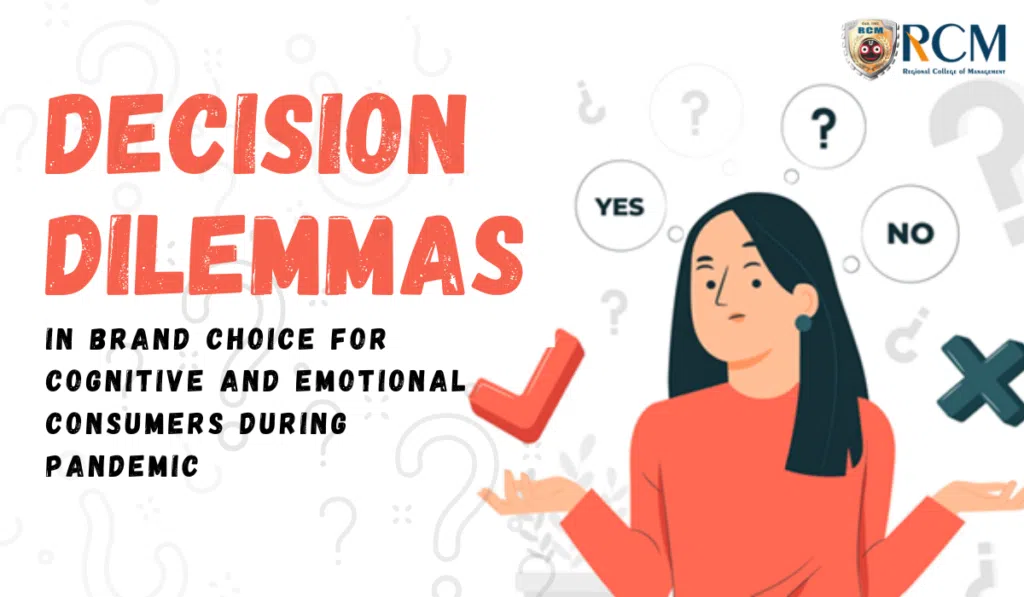
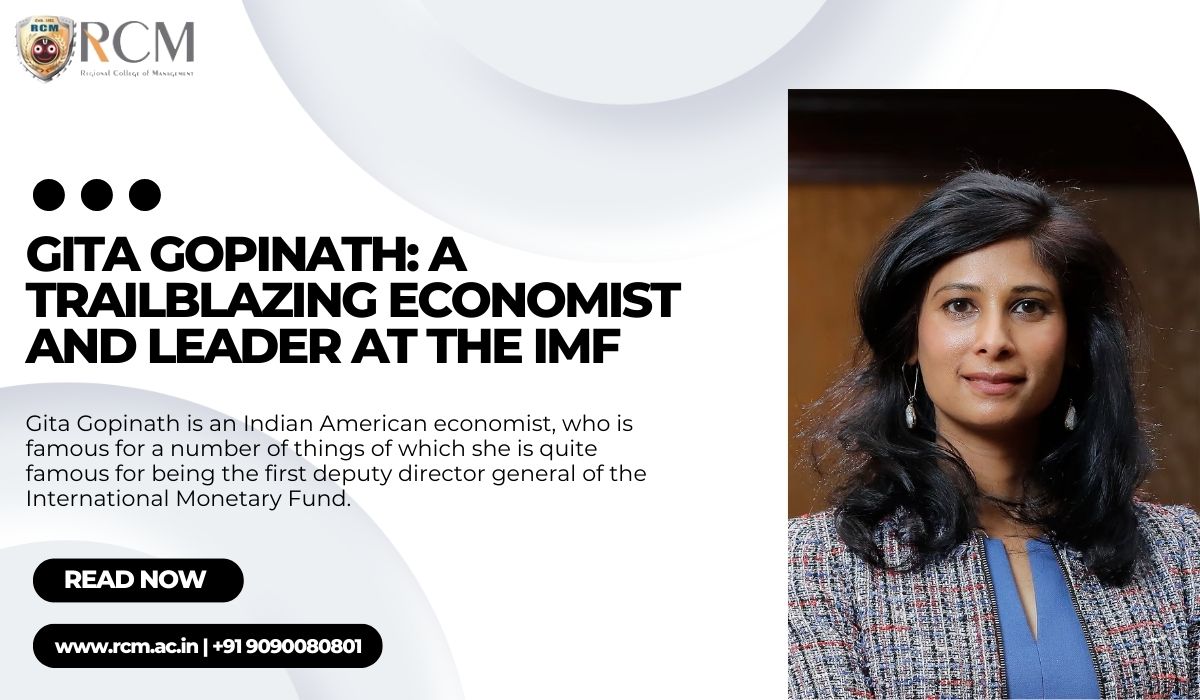
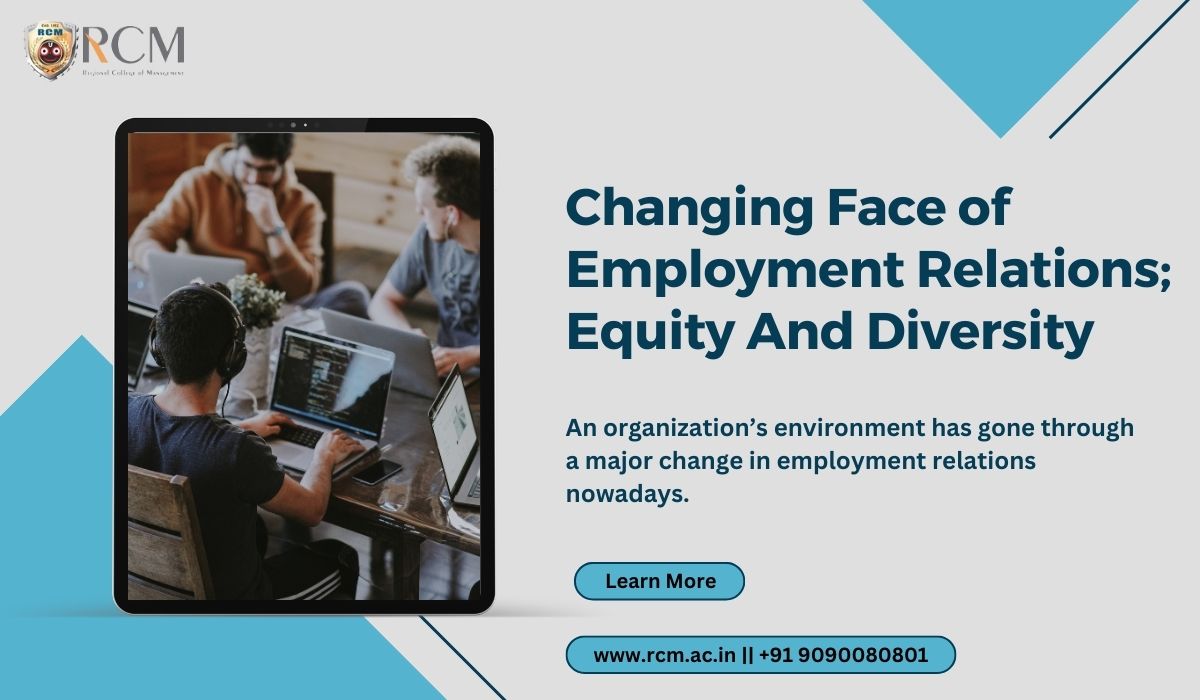



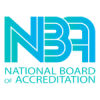


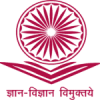

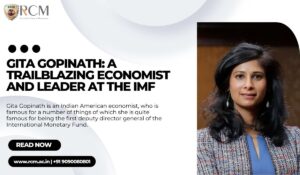
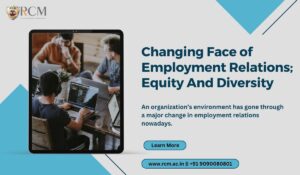


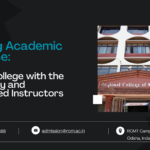
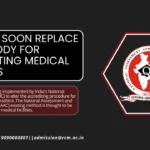
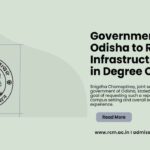
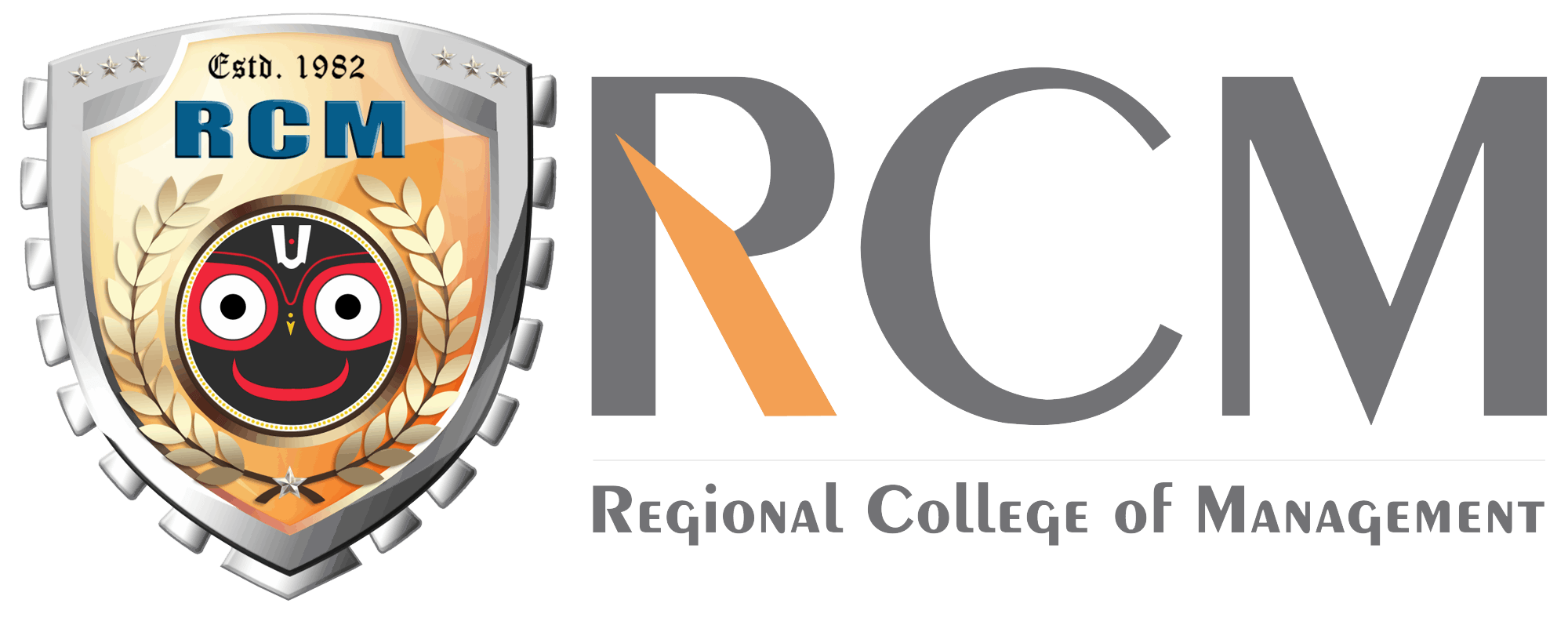
One Comment
Thanks, I’ve recently been searching for info approximately this topic for a while and yours is the best I have came upon till now. But, what concerning the conclusion? Are you certain about the supply?
Look at my website;